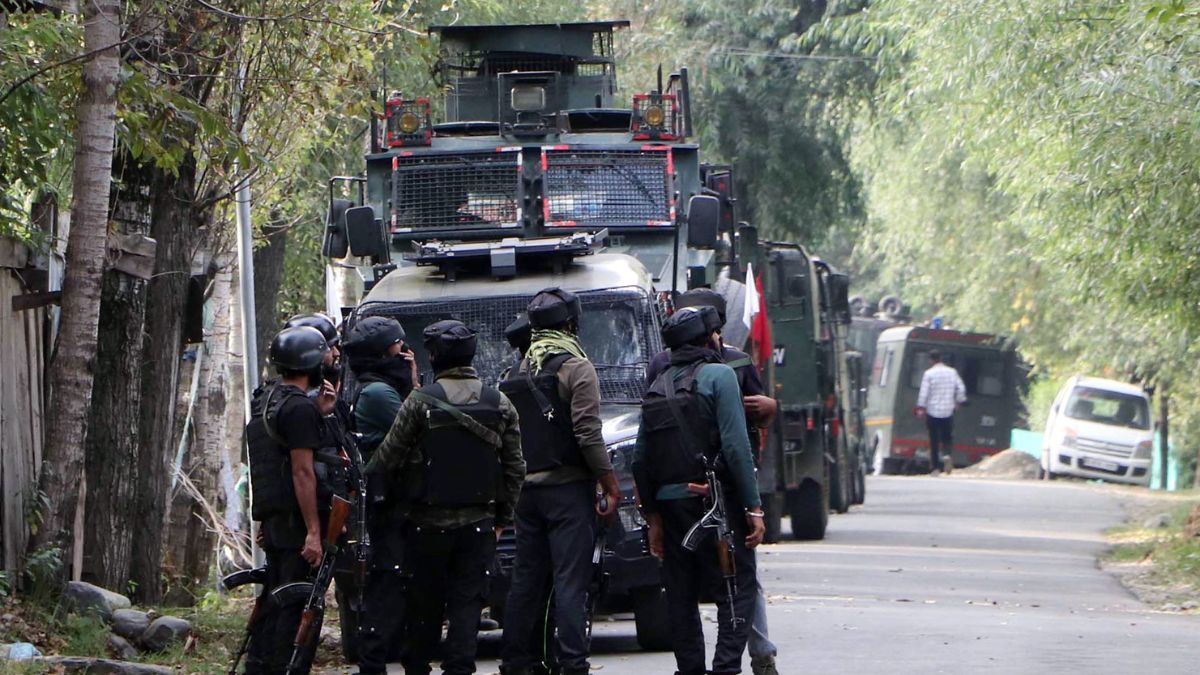The escalating security situation in Jammu and Kashmir (J&K) took a concerning turn on Thursday with a terrorist ambush targeting an Indian Army vehicle in the Gulmarg area of Baramulla district. Initial reports suggested varying casualty figures, causing confusion and underscoring the fluid nature of the situation. While some early reports indicated one civilian porter killed and four army personnel injured, later updates from the Indian Army’s Chinar Corps clarified that two soldiers and two porters sustained injuries during a subsequent firefight. This incident highlights the persistent threat posed by terrorist groups in the region and raises questions about the effectiveness of current security measures, particularly given that it follows another attack targeting a migrant laborer in Pulwama earlier the same day. The events underscore the volatile security landscape and the ongoing struggle to maintain peace and stability in the region. This analysis will delve deeper into the details of the Gulmarg attack, its implications, and the broader security context in J&K.
The Gulmarg Ambush and its Aftermath
The ambush in the Botapather area of Gulmarg unfolded swiftly, resulting in a brief but intense firefight between terrorists and the Indian Army. The precise sequence of events remains under investigation, but it’s clear that the terrorists acted with premeditation, targeting an army vehicle carrying personnel and civilian porters. The initial discrepancies in reporting casualty figures are a common occurrence in the immediate aftermath of such incidents, highlighting the challenges in gathering accurate information in a volatile environment. The final official account, as released by the Indian Army, confirms injuries but clarifies that no fatalities among military personnel or porters occurred, though injuries suffered were severe enough to warrant immediate evacuation for medical care.
The evolving narrative and information challenges
The initial conflicting reports underscore the complexities of gathering and verifying information in active conflict zones. Different sources, including early on-the-ground assessments, official statements, and social media reports, may offer conflicting narratives until a thorough investigation can determine the accurate accounting of casualties and the overall timeline. This incident once again emphasizes the importance of careful verification of information in crisis situations, and the challenges faced by reporters attempting to collect accurate information from the scene. The release of the information by the Indian Army on the official X handle exemplifies the challenges in real-time information flow during fast-evolving scenarios.
The Broader Security Context in J&K
The Gulmarg attack is not an isolated incident. It comes on the heels of another attack earlier that same day in Pulwama district, where a migrant laborer was shot and injured. This highlights a concerning pattern of continued terrorist activity in the region, suggesting that despite ongoing security operations, terrorist groups still retain the capacity to launch attacks and disrupt stability. These attacks indicate the persistence of threats in J&K despite ongoing efforts by Indian security forces, which must remain continuously vigilant in neutralizing threat elements that actively seek to undermine the region’s security landscape.
Patterns of Terrorist Activity
Terrorist groups have demonstrated a propensity to target both security personnel and civilians, including migrant workers, aiming to sow fear and instability. These incidents underscore the challenges posed by an unpredictable security landscape, particularly the use of both kinetic attacks that target soft spots with the use of guerilla tactics. The strategic aims remain unclear in these cases, but the actions serve to create uncertainty and hinder efforts aimed at restoring lasting peace and stability in the region.
Political Implications and Responses
The attacks have drawn immediate reactions from political figures, further highlighting the sensitivity surrounding the security situation in J&K. Statements made by leaders like former Deputy Chief Minister Kavinder Gupta reflect the political concerns surrounding the implications of continued terrorist violence and the challenges of maintaining peace in the region amidst such security threats.
Political statements and security concerns
The concerns voiced regarding the attacks emphasize the need for collaborative efforts between the Centre and state governments to counter and effectively neutralize these threats. These events underscore the fragility of security improvements and maintain the importance of continued vigilance against acts of terror, to effectively combat and address terrorism in the region.
The Way Forward: Counter-Terrorism Strategies
Addressing the ongoing security challenges in J&K requires a multi-pronged approach. This includes strengthening intelligence gathering and surveillance, enhancing counter-terrorism operations, strengthening the region’s security forces, and implementing comprehensive strategies aimed at addressing and countering the root causes of conflict to prevent recurrence. Collaborative strategies to mitigate terrorism that involve active collaboration between different security elements, is vital to enhance safety and security.
Strengthening security measures and community engagement
Furthermore, community engagement and confidence-building measures aimed at strengthening local partnership, in addition to actively ensuring that all the needs of the populace are addressed, is vital to curb terrorist support and foster a secure environment where the risk of terrorism is further mitigated. This proactive engagement will aid in strengthening community resilience, foster a sense of collective responsibility and work to build a society less vulnerable to infiltration by terrorists, allowing for the fostering of a collective responsibility towards national security.
Takeaway Points:
- The Gulmarg attack, while resulting in injuries, serves as a stark reminder of the persistent threat of terrorism in J&K.
- Discrepancies in initial casualty reports highlight the challenges of gathering accurate information in dynamic security situations.
- The attacks underscore the need for continued vigilance and strengthened counter-terrorism strategies.
- A multi-pronged approach involving intelligence gathering, enhanced security operations, community engagement, and addressing root causes is crucial to counter terrorism effectively in J&K.
- Collaborative efforts between central and state governments, alongside continuous monitoring of the security landscape remain vital in sustaining long-term security and stability in J&K.




